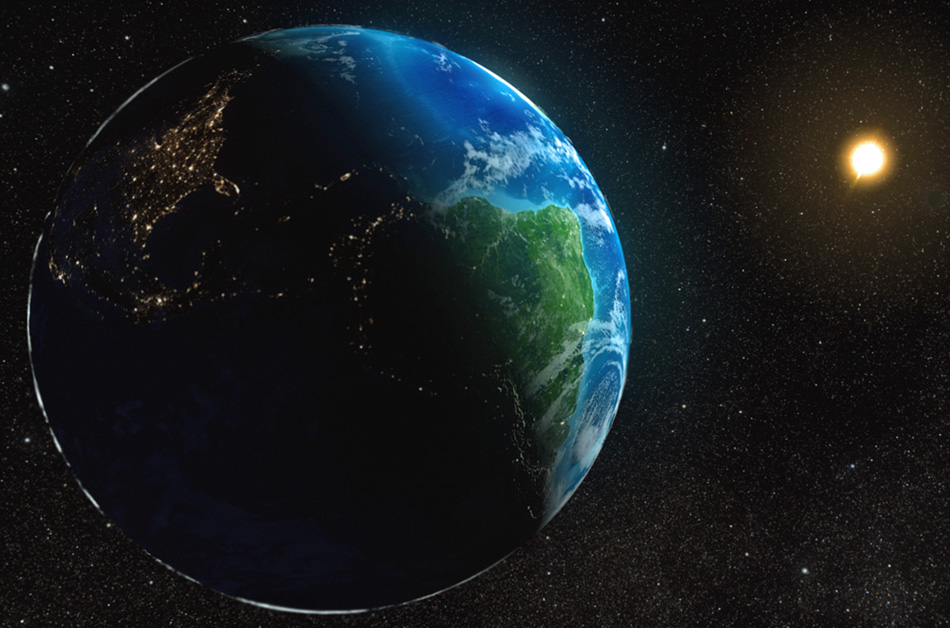The USGS Water Science School
The sun is what makes the water cycle work. The sun provides what almost everything on Earth needs to go—energy, or heat. Heat causes liquid and frozen water to evaporate into water vapor gas, which rises high in the sky to form clouds...clouds that move over the globe and drop rain and snow. This process is a large part of the water cycle.
Even in a dry desert environment, the water cycle is taking place. If you look at a picture of a real desert–no, the Sahara Desert will do, but Antarctica at the bottom of the world is even more of a desert. This place actually gets less precipitation than the Sahara does! The inner regions of Antarctica gets only about 2 inches of precipitation per year. The winds here blow up snow from the land and put it into the atmosphere, which is part of the water cycle. And the sun helps out, too, causing sublimation to occur, which causes snow to evaporate directly into water vapor gas.

Credit: NASA